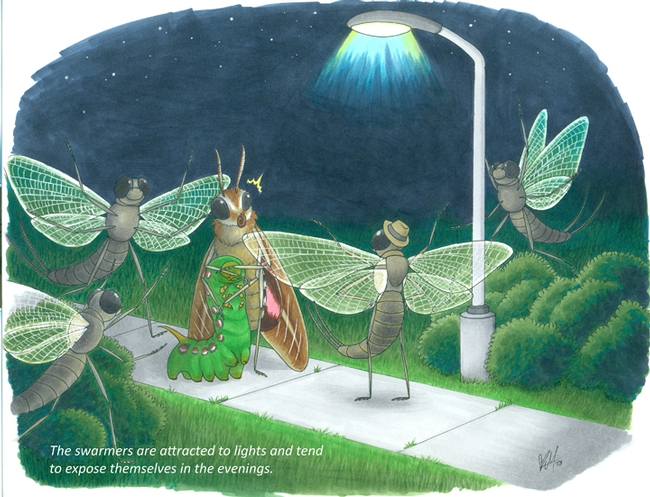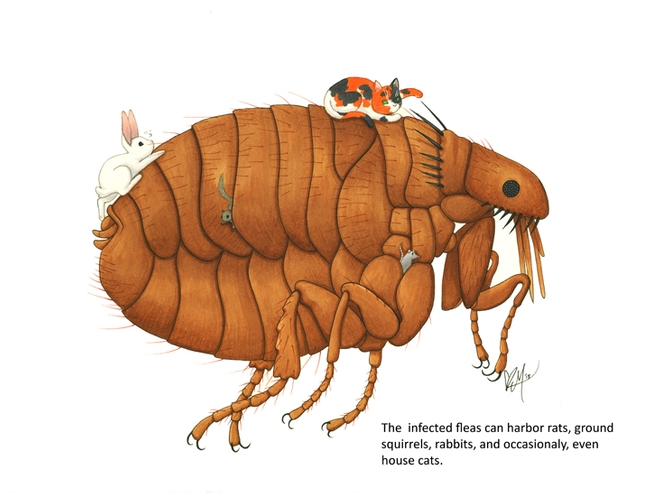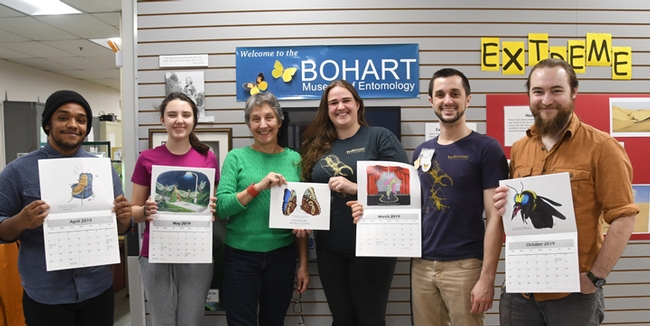- Author: Kathy Keatley Garvey
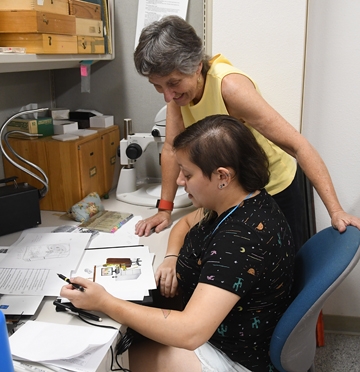
That's how a University of California, Davis undergraduate student described mayflies in a class taught by Lynn Kimsey, professor of entomology and director of the Bohart Museum of Entomology.
That sentence now appears in a newly published---and first-ever--Bohart Museum calendar, illustrated by talented artist Karissa Merritt, a fourth-year UC Davis entomology major.
Professor Kimsey collects strange, funny and odd answers that her students pen on their tests or essays in Entomology 100. Some of her favorite sentences, all calendared, include:
- “The infected fleas can harbor rats, ground squirrels, rabbits, and occasionally, even house cats.”
- "In addition to a food product, pollinators are also used to pollinate crops.”
- "Normally, locusts are introverted creatures; they do not socialize unless it is for reproduction.”
- "Drones are male bees that contribute only in the perm production for the queen."
- "Feigning death is also a play that stick insects will do when their other tragedies are all failed."
Merritt, a two-year Bohart associate, illustrated the entire calendar, drawing upon her creativity, humor and imagination. “Karissa is a gifted graphic artist,” Kimsey said.
The calendar, published by Tara Baumann & Associates of Vacaville, is a project of the non-profit Bohart Museum Society. The calendar sells for $12 at the Bohart Museum, located in Room 1124 of the Academic Surge Building on Crocker Lane. Those who contribute $50 or more to the Bohart Museum Society will receive a calendar with their donation. All proceeds are earmarked for research, education and outreach projects.
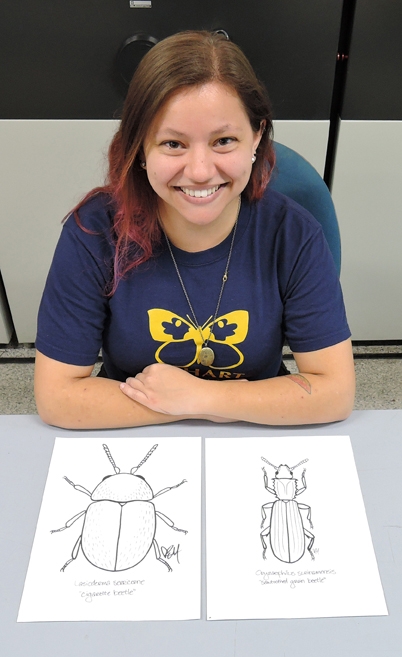
"One of the outcomes of teaching a general entomology course to undergraduates is that you develop a new appreciation for science fiction-fantasy," Kimsey said. "In part, this is because every year some new scientific discovery about an insect causes you to have a head slapping moment—they do what? The other part is how little students know about insects. Most are not entomology majors, and many aren't even majors in the biological sciences, so there are a lot of misconceptions.”
“One aspect of teaching this course is the writing requirement," she explained. "Students at UC Davis are required to take a number of units in general education, science and writing. My course fulfills two of those requirements, which means that I have to require—and grade—student term papers as part of their assignments. I can say definitely that student writing abilities have not improved over the years. So, to alleviate the pain of grading these works of art, I started collecting particularly silly or otherwise awesome sentences from their papers.”
Karissa Merritt not only enjoys drawing insects but teaching others how to do so. Last January, the Bohart Museum featured her as an “artist in residence” at its open house on insects and art. She offered tips on how to draw insects and took requests from youths. “It was touching to see how something like mundane doodling could bring smiles to kids' faces,” she said. “In fact, many ended up going home with original art work!"

What especially fascinates her the most about insects? “How alien their biology and morphology as compared to vertebrates,” Merritt said. “But working in the Bohart, I find many specimens that just amaze me with their beauty. Insects are just so diverse and it's amazing what nature produces!"
Merritt's favorite insect order is Hymenoptera, which includes bees, ants and wasps. “But I like all insects,” she acknowledged. She learned beekeeping when she volunteered in the lab of Extension apiculturist Elina Lastro Niño at the Harry H. Laidlaw Jr. Honey Bee Research Facility, UC Davis.
Merritt is also an alumnus of “Bug Boot Camp,' a five-week insect taxonomy and field ecology course taught by Phil Ward, UC Davis professor of entomology and held at the Sagehen Creek Field Station, in California's northern Sierra Nevada. That course enabled her to sharpen her taxonomy skills.
The Bohart Museum houses a global collection of nearly eight million insect specimens, and is the home of the seventh largest insect collection in North America and the California Insect Survey, a storehouse of insect biodiversity. The facility also includes a gift shop and a live "petting zoo" of Madagascar hissing cockroaches, walking sticks, and tarantulas.
The Bohart Museum is open to the public (free admission) from 9 a.m. to noon and 1 to 5 p.m. Mondays through Thursdays. More information on the Bohart Museum is available on the website at http://bohart.ucdavis.edu or by contacting (530) 752-0493 or emailing bmuseum@ucdavis.edu.
